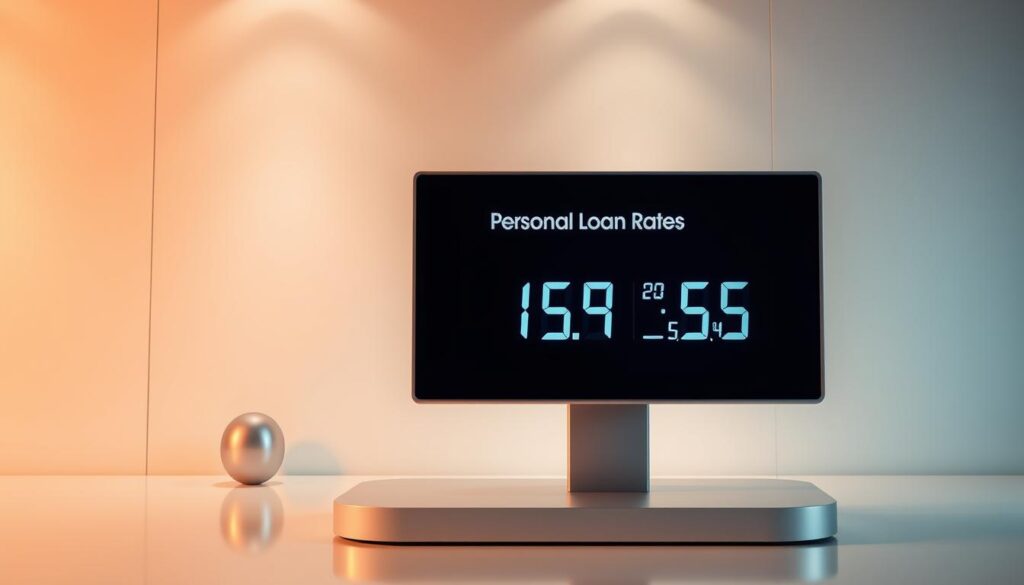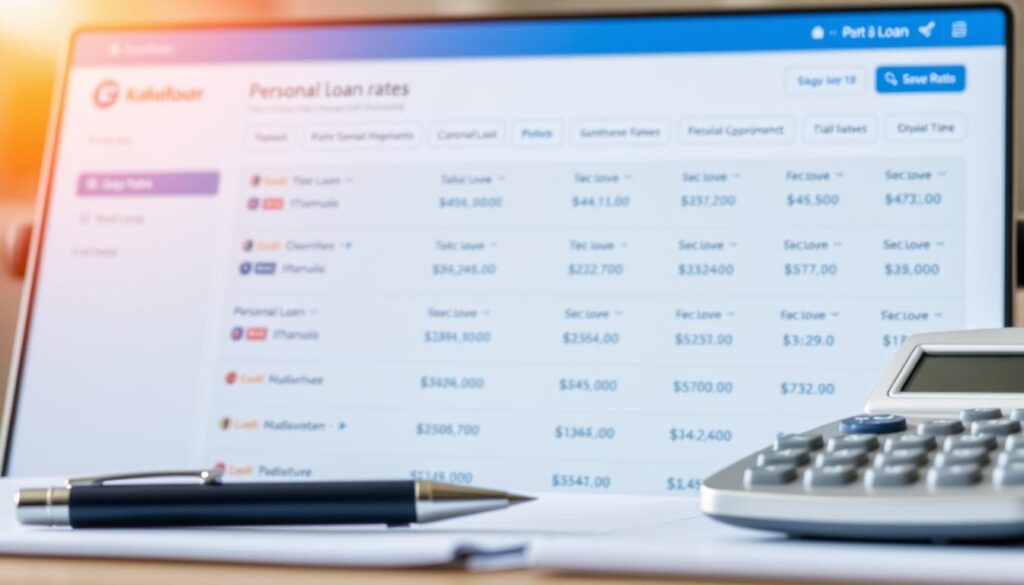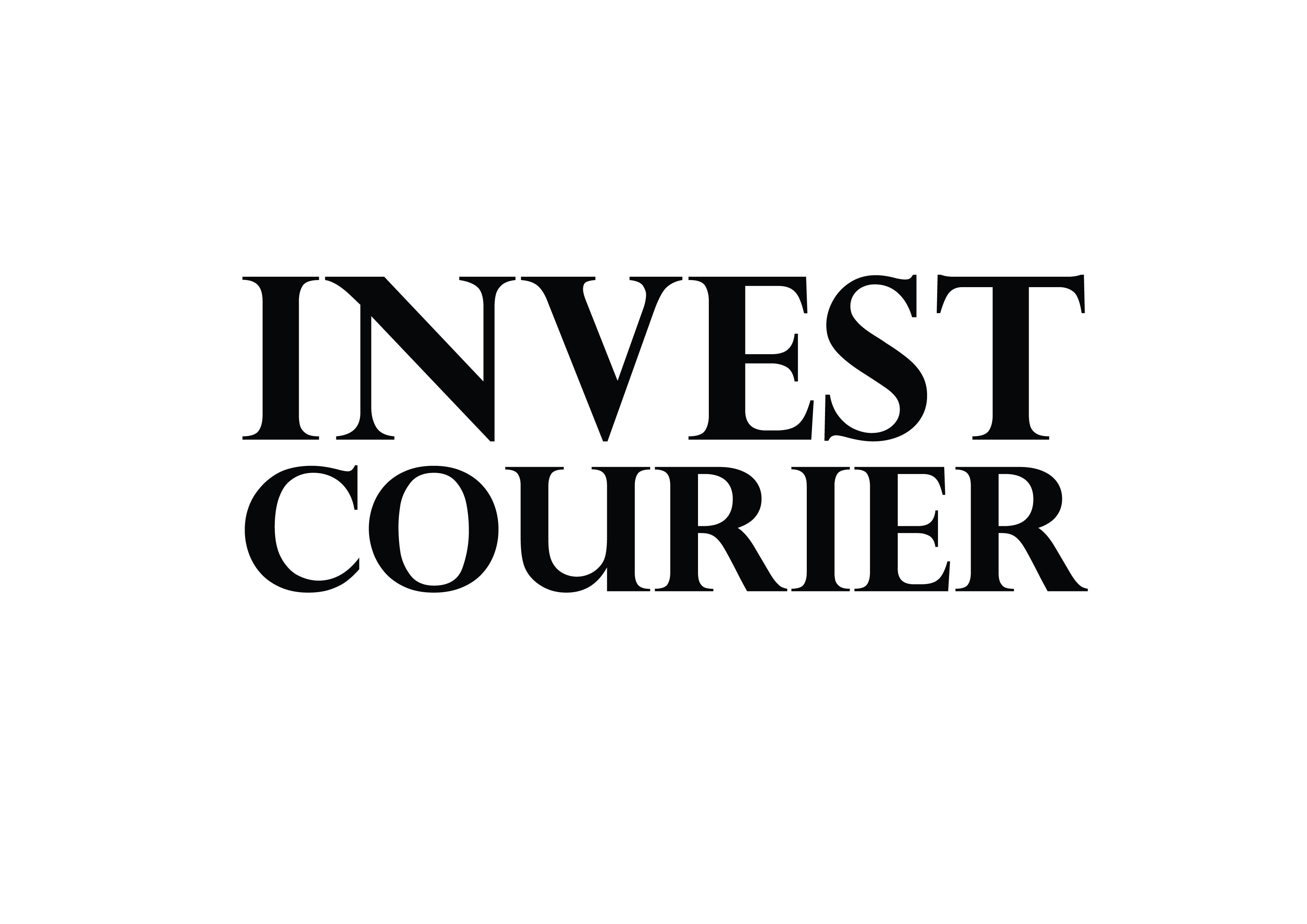Finding the best personal loan interest rates is key to saving money. Interest rates can change a lot, and knowing how they work is important. Rates depend on your credit score, how much you borrow, and how long you take to pay it back. To get the best rates, compare offers from different lenders, like checking personal loan interest rates online.
By researching and comparing rates, you can find the best personal loan interest rates for you. This can help you save on interest and reach your financial goals. Whether it’s to pay off debt or buy something big, knowing about personal loan interest rates is crucial.
Introduction to Personal Loans
Personal loans can be a good way to get cash when you need it. But, it’s important to know the terms and conditions before you apply. Rates can be fixed or variable and can differ a lot between lenders. Learning about personal loan interest rates helps you make smart choices and find the best deals.
Key Takeaways
- Personal loan interest rates can vary significantly between lenders
- Understanding how personal loan interest rates work is essential to making informed decisions
- Comparing offers from different lenders can help individuals find the best rates
- Personal loan interest rates are determined by factors such as credit score, loan amount, and term length
- Researching and comparing rates can help individuals save money on interest payments
- Personal loan interest rates can be fixed or variable, and they can have a significant impact on the total cost of the loan
Understanding Personal Loan Interest Rates
When you’re looking at personal loans, knowing about interest rates is key. Best personal loan rates can change a lot based on who you borrow from, how much you borrow, and your credit score. It’s smart to look for low interest personal loans that match your budget.
Choosing the right interest rate is important. There are fixed and variable rates. Fixed rates stay the same, while variable rates can go up or down. Think about your financial goals and how much risk you’re okay with when picking a rate.
What Are Personal Loan Interest Rates?
Personal loan interest rates are the extra cost of borrowing money over time. They can change based on your credit score, how long you borrow for, and the market. To get the best rates, work on your credit score and choose shorter loans.
Fixed vs. Variable Rates
Fixed rates mean your payments stay the same, which is stable. But, variable rates might start lower but could go up. Always check the fine print before you agree to a loan.
How Interest Rates Are Determined
Interest rates for personal loans depend on several things. These include your credit score, how much you borrow, and the current market. Lenders use this info to figure out the risk of lending to you and set the rate. Knowing this can help you find the best rates for your loan.
Factors Influencing Personal Loan Interest Rates
Personal loan interest rates can change a lot. To find the best rates, it’s key to know what affects them. Both personal and economic factors play a role in these rates.
Your credit score is a big factor in interest rates. A good score can lead to lower rates. The amount you borrow and how long you take to pay it back also matter. Larger loans or longer terms usually mean higher rates.
Credit Score Impact
A credit score shows how reliable you are with money. It’s based on your past payments and credit history. A high score can get you better rates, while a low score might mean higher rates.
Loan Amount and Term Length
The size of your loan and how long you take to pay it back affect rates. Bigger loans or longer terms often mean higher rates. Think carefully about these when you apply for a loan to get the best rate.
Economic conditions and market trends also change interest rates. Things like inflation or recessions can raise rates. Keeping up with these trends helps you make smart choices when comparing rates.
Current Trends in Personal Loan Interest Rates
Personal loan interest rates are always changing. It’s key to stay updated to get the best rates. Economic conditions and federal reserve decisions play big roles in these changes. Knowing the personal loan APR helps understand the loan’s total cost.
Recently, more lenders have entered the market. This competition has led to better rates for borrowers. Inflation trends show its big impact on loans. By researching and comparing, you can find the lowest rates and save on interest.
- Credit score and its impact on interest rates
- Loan amount and term length
- Economic conditions and market trends
Understanding these and keeping up with trends helps make smart choices. This way, you can find the best rates for your loan.
To get the lowest rates, keep researching and comparing. By monitoring interest rates and adjusting your plans, you can save money. This helps you reach your financial goals.
Types of Personal Loans and Their Rates
Interest rates on personal loans can change a lot based on the loan type. Rates are affected by your credit score, how much you borrow, and how long you take to pay it back. We’ll look at the different personal loans and their rates.
There are many personal loans, like secured and unsecured ones. Secured loans need something valuable as collateral and usually have lower rates. Unsecured loans don’t need collateral but have higher rates.
Secured vs. Unsecured Loans
Secured loans are safer for lenders, so they offer lower rates. Unsecured loans are riskier, leading to higher rates. Think about the good and bad of each before choosing.
Special Programs and Promotions
Some lenders have special deals to lower your loan rates. These might include discounts for paying on time, rewards for loyalty, or special introductory rates. Always check the fine print to make sure these deals fit your financial plans.
Peer-to-Peer Lending Rates
Peer-to-peer lending is a different way to get a loan. It connects you with investors, which can mean better rates. But, make sure you understand the loan terms well.
When looking at loan rates, consider everything involved. Knowing about the different loans and their rates helps you choose wisely for your financial situation.
| Loan Type | Interest Rate | Term Length |
|---|---|---|
| Secured Loan | 6-12% | 2-5 years |
| Unsecured Loan | 10-20% | 2-5 years |
| Peer-to-Peer Loan | 8-15% | 2-5 years |
How to Compare Personal Loan Interest Rates
It’s key to compare personal loan interest rates to get the best deal. With many lenders offering different rates, it can feel overwhelming. Knowing how to compare these rates is crucial for making a smart choice.
When looking for low interest personal loans, online comparison tools are helpful. You can enter your loan amount, credit score, and other details. This way, you can see a list of lenders and their rates, helping you find the best personal loan rates.
Utilizing Online Comparison Tools
Online tools are great for finding top personal loan rates. They give you a detailed look at different lenders. You can compare their rates, fees, and repayment terms easily. This makes it simple to find the right loan for you.
Key Terms to Look For
When comparing rates, look for certain terms. These include the annual percentage rate (APR), interest rate, and repayment term. Knowing these terms helps you make a better choice and find the best rates.
Understanding APR vs. Interest Rate
APR and interest rate are often confused, but they’re not the same. The interest rate is the loan’s interest charge. The APR adds in any extra fees. Knowing the difference is key to finding the best loan and making a smart choice.
Tips for Getting the Best Personal Loan Rates

To get the best personal loan rates, knowing the current rates is key. It helps you make smart choices and save money. A good credit score is very important. It can get you lower interest rates, while a bad score means higher rates.
Prequalifying for loans is another smart move. It lets you check offers without hurting your credit score. Shopping around is also crucial. Different lenders offer different rates and terms. You can visit the investcourier website for more finance tips.
Maintaining a Good Credit Score
Keeping a good credit score takes consistent effort and smart money habits. Pay bills on time, use credit wisely, and check your report for mistakes. This way, you can boost your score and get better loan rates.
Prequalifying for Loans
Prequalifying for loans is easy. Just share some basic financial info with lenders. This lets you see rates and terms from various lenders without harming your credit. You can then pick the best offer.
- Check your credit score
- Provide basic financial information
- Compare personal loan rates and terms
By following these tips, you can secure the best personal loan rates. Always compare rates and terms from different lenders before deciding.
The Role of Lenders in Setting Rates
Lenders have a big say in what your personal loan APR will be. To get the best rates, it’s key to know how lenders set their rates. Banks, credit unions, and online lenders each have their own ways of doing this.
When setting rates, lenders look at your credit score, how much you’re borrowing, and how long you want to pay it back. They also consider the state of the economy and current trends. Knowing this helps you pick the right lender and negotiate a good APR.
How Banks Set Rates
Banks look at your credit and the loan’s term to set rates. They might give you a better deal if you have good credit or if you put up collateral.
The Influence of Credit Unions
Credit unions often have better rates than banks. They’re owned by their members, which means they can offer more personalized service. They might also give you a discount if you have good credit or collateral.
Alternative Lenders and Their Rates
Online lenders and others might offer flexible terms and competitive rates. They use different ways to check your credit, which can help if you don’t have a lot of credit history. But, they might charge more fees and interest, so read the fine print carefully.
To get the best rates, compare what different lenders offer. Look at the loan’s term, fees, and how you’ll pay it back. By doing your homework, you can find a loan that fits your budget and needs.
| Lender Type | Interest Rate | Fees |
|---|---|---|
| Banks | 6-12% | 1-3% |
| Credit Unions | 5-10% | 0.5-2% |
| Alternative Lenders | 8-15% | 2-5% |
The Application Process for Personal Loans
Applying for a personal loan involves several steps and needed documents. It’s key to compare interest rates since they vary. Rates depend on your credit score, loan amount, and how long you want to borrow.
The first step is prequalification. Lenders check if you qualify and offer a preliminary rate. Then, you must gather documents like ID, proof of income, and bank statements. It’s crucial to read the loan terms carefully before signing.
Here are the main steps in applying for a personal loan:
- Prequalification: Lenders check your credit and offer a preliminary rate.
- Application submission: You send in your application and documents.
- Verification: Lenders check your info and credit report.
- Approval: If approved, you get a loan offer with the agreed-upon rate and terms.
The time it takes to get approved and get the money varies. But most lenders aim to decide within a few days. Once you’re approved, the money goes straight into your bank account. Knowing the process and reviewing the loan terms helps you make a smart choice and get a good rate.
Common Misconceptions About Personal Loan Rates

Many people think personal loans are always expensive. But, this isn’t true. You can find loans with low interest rates if you do your research.
It’s important to understand what a personal loan entails. Look at more than just the interest rate. Check out fees, repayment terms, and what credit score you need. For more info, visit investcourier.
Debunking Myths
Some think you need perfect credit for a good loan rate. But, credit score isn’t the only thing lenders look at. They also check your income and debt-to-income ratio.
Clarifying Terms and Jargon
To get the best loan rates, know the loan terms. Understand fixed vs. variable rates and any fees. By comparing offers, you can find a loan that suits your budget.
Here are some tips for finding the best loan rates:
- Compare rates from multiple lenders
- Consider a co-signer if you have bad credit
- Look for loans with flexible repayment terms
Evaluating the Total Cost of a Personal Loan
When looking at personal loans, it’s key to see the whole picture, not just the interest rate. Look beyond the annual percentage rate (APR) to all fees and charges. Interest rates can change a lot based on the lender, loan amount, and how long you’ll take to pay it back.
To understand the full cost of a personal loan, add up the interest, fees, and charges over time. Use online tools or talk to a financial advisor to do this. By comparing rates and terms, you can pick the best loan for your money situation.
Understanding Fees and Charges
- Origination fees: These are fees charged by the lender for processing the loan application.
- Late payment fees: These are fees charged when a payment is missed or late.
- Prepayment fees: These are fees charged when a loan is paid off early.
The Importance of Loan Terms
The loan term, or how long you’ll take to pay it back, affects the total cost. A longer term means smaller monthly payments but more interest paid over time. Think about your finances and pick a term that works for you. It should balance affordable payments with quick repayment to save on interest.
Managing Your Personal Loan Post-Approval
After getting a personal loan approved, managing it well is key to avoid money troubles. Harrison, a financial expert, advises making payments on time, looking into refinancing, and paying off the loan early. A good personal loan management can keep your credit score high, which is vital for getting the best loan rates later.
To pay on time, set up automatic payments or reminders. Refinancing can help if your loan’s APR is too high. This way, you might get a lower APR, cutting down your monthly payments and interest.
Ways to pay off your loan early include making extra payments, using the snowball method, or combining debts. Always check the loan terms for any fees or penalties for early repayment. Effective loan management can save you money, boost your credit score, and lead to better loan rates in the future.
- Make timely payments to avoid late fees and penalties
- Explore refinancing options to reduce the personal loan APR
- Devising strategies for paying off the loan early to save money
By following these tips and keeping a good credit score, you can have a smooth personal loan experience. This makes it easier to find the best loan rates for future loans.
| Loan Type | Personal Loan APR | Loan Term |
|---|---|---|
| Unsecured Loan | 6.99%-35.99% | 2-7 years |
| Secured Loan | 4.99%-25.99% | 2-10 years |
Conclusion: Making Informed Decisions on Personal Loans
Understanding personal loan interest rates is key. Knowing what affects rates and comparing lenders helps you make smart choices. Personal loan interest rates vary a lot, so it’s crucial to look for the best offer.
Looking to consolidate debt or fund a big purchase? Researching interest rates can save you a lot of money. By knowing how to apply for a loan and manage it well, you can find the right one for you.
Getting the most from personal loan interest rates requires careful thought and a clear financial plan. With the right knowledge and strategy, you can secure a loan that helps you achieve your financial goals.
FAQ
What are personal loan interest rates?
Personal loan interest rates are the yearly rate lenders charge for loans. They vary based on your credit score, loan amount, and how long you’ll take to pay it back.
What is the difference between fixed and variable personal loan interest rates?
Fixed rates stay the same for the loan’s life. Variable rates can change with the market. Fixed rates are predictable, but variable rates might start lower and then change.
How are personal loan interest rates determined?
Rates are based on your credit, loan amount, term, lender costs, and market conditions. Lenders use these to decide how much risk the loan is and set the rate.
How does my credit score impact personal loan interest rates?
Your credit score is key for lenders. Higher scores mean lower rates because you’re seen as less risky. Lower scores might get you higher rates or no loan at all.
How do the loan amount and term length affect personal loan interest rates?
Bigger loans and longer terms usually mean higher rates. Lenders see these as riskier, so they charge more to cover that risk.
How have recent changes in the market affected personal loan interest rates?
Economic changes, like Federal Reserve policies, have influenced rates. Rates have changed, with some lenders offering better deals to attract borrowers.
What are the differences in interest rates between secured and unsecured personal loans?
Secured loans, backed by collateral, often have lower rates. Unsecured loans, without collateral, are riskier and have higher rates.
How can I compare personal loan interest rates from different lenders?
Use online tools to compare rates and terms from various lenders. Look at the APR, which includes the rate and fees, for the full loan cost.
What are some tips for getting the best personal loan interest rates?
To get the best rates, keep your credit score high, prequalify with lenders, and shop around. Negotiate with lenders and understand the loan’s total cost, including fees.
How do I evaluate the total cost of a personal loan?
Examine the APR, which includes the rate and fees. Consider the loan term, monthly payments, and the loan’s long-term financial impact.


